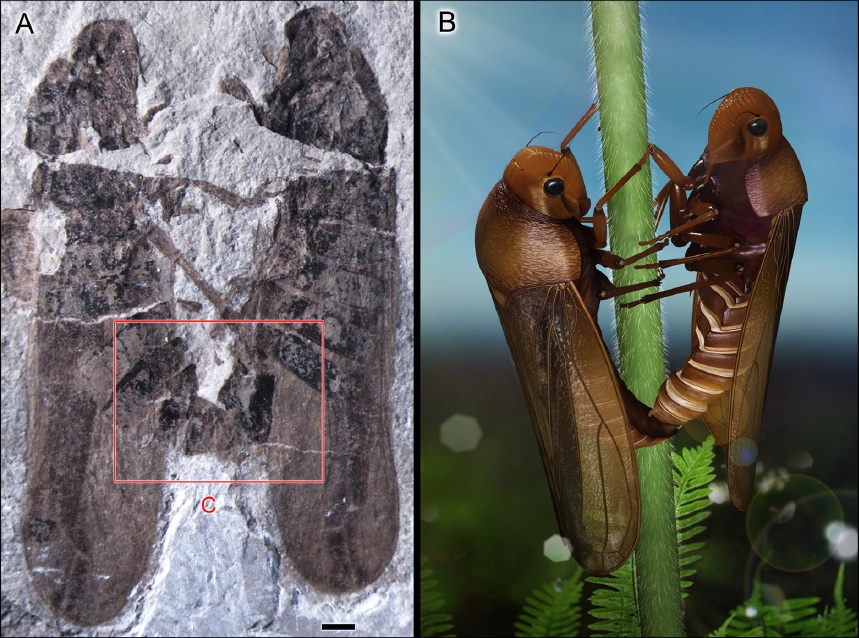The process of identifying prehistoric organisms at the species level is made a little easier by the extensive fossil collections that have been excavated in the name of science. However, this collection is only representative of a small fraction of life that once existed, and still an even smaller fraction of this collection has captured the behavioural traits of prehistoric animals. The discovery of a fossil containing individuals copulating is thus a rare and wonderful thing; one such fossil was recently unearthed in China and contains two froghoppers undertaking the act of mating.
The fossil was one of 1,200 specimens that Shu Li and colleagues from ChinaÔÇÖs Capital Normal University studied, it is an example of a great specimen as the mating individuals were preserved in Jurassic rock instead of preserved in amber. This allows biological structures such as the genitalia to be clearer under a microscope as the amber usually obstructs the view of the copulating mechanism.
The froghoppers found in the fossil are members of a newly identified extinct species called Anthoscytina perpetua, the froghoppers in general are not an extinct species though as there are still species present today. The fossil suggests that the mating mechanism has been highly conserved for over 165 million years. The froghoppers were petrified mating belly to belly which is unusual when compared to living species which mate side to side. The reason that the individuals exhibited in the fossil are thought to be froghoppers is because of the anatomy of the insects. The bodies were 15-17mm long including forewings in repose; the heads were narrower than the pronotum and hosted ovoid eyes and antennae divided into four segments, these characteristics are similar to modern day froghoppers.
The overriding question however is whether the froghoppers have been fossilised in their true mating position or whether the occasion of death lead to the bodies shifting and thus they represent a faulty view of the mating mechanism of prehistoric froghoppers. If the latter is the case it could provide evidence supporting the fact that the individuals are examples of another species and not a froghopper species. In spite of this the genitalia observed in the fossil are markedly similar to the genitalia of their modern day equivalents leading to the conclusion that froghoppers have been copulating in a consistent way for 165 million years at the least.
Roxanne Everitt





Add Comment